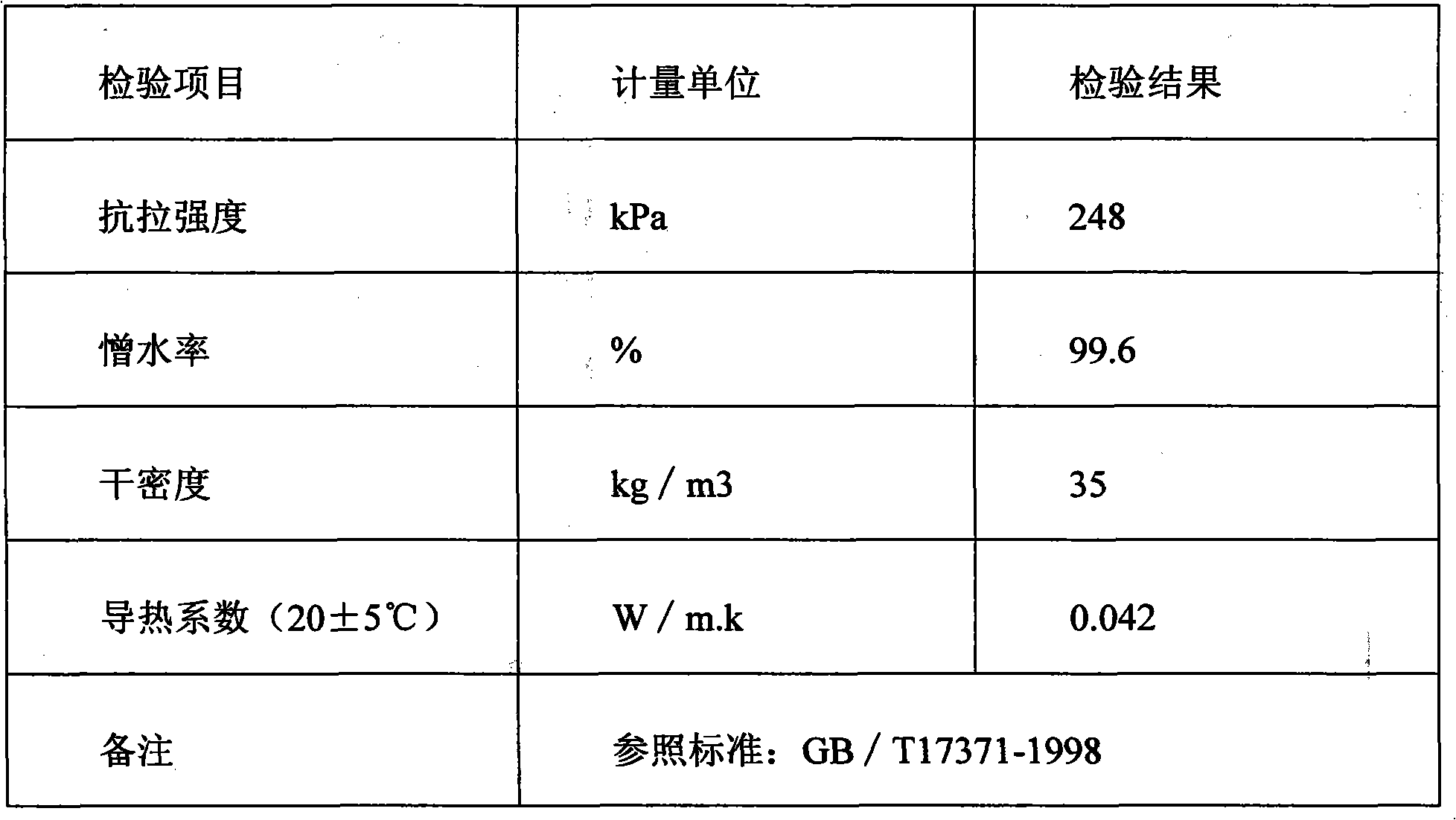Low-carbon high-efficiency compound magnesium silicate energy-saving and heat-insulating material
A thermal insulation material, magnesium silicate technology, applied in the field of energy-saving thermal insulation materials, can solve the problems of high cost, thermal insulation materials are not easy to safe production and labor protection, labor coefficient is strong, etc., to achieve good thermal insulation performance, superior thermal insulation performance, saving engineering The effect of investment
- Summary
- Abstract
- Description
- Claims
- Application Information
AI Technical Summary
Problems solved by technology
Method used
Image
Examples
Embodiment 1
[0050] The formula of each cubic product is calculated according to the percentage of the above-mentioned technical scheme, and the total amount is 100%.
[0051] In this thermal insulation material, the distribution ratio of each raw material component by weight percentage is: 21% of sepiolite, 13% of silicate pulped cotton, 6% of perlite, 7% of diatomite, 1% of sodium silicate, magnesia Soil 1%, aluminum silicate high-temperature cotton 23%, brucite 14%, 831 glue 8%, liquid base barium-zinc mixture (wherein base: barium-zinc=1: 2 parts by weight) 2%, fast T (sulfonium Dioctyl succinate sodium salt) 4%. Preparation of liquid base barium-zinc mixture: take 1 weight part of base and 2 parts by weight of barium-zinc.
[0052] The specific production steps of the low-carbon high-efficiency composite magnesium silicate energy-saving thermal insulation material of the present invention are as follows:
[0053] 1) According to the above raw material formula, the formula adopts com...
Embodiment 2
[0060] The formula of each cubic product is calculated according to the percentage of the above-mentioned technical scheme, and the total amount is 100%.
[0061] In this thermal insulation material, the distribution ratio of each raw material component by weight percentage is: 25% of sepiolite, 10% of silicate pulped cotton, 6% of perlite, 6% of diatomite, 2% of sodium silicate, magnesia Soil 2%, aluminum silicate high-temperature cotton 17%, brucite 19%, aluminum dihydrogen phosphate: 7%, liquid base barium-zinc mixture (wherein base: barium-zinc=1: 2 parts by weight) 3%, fast T (dioctyl sulfosuccinate sodium salt) 3%.
[0062] The production method is the same as in Example 1, and it is formed by screening, removing impurities, pulverizing, mixing, electric heating, and stirring the materials of the formula in Example 2.
Embodiment 3
[0064] The formula of each cubic product is calculated according to the percentage of the above-mentioned technical scheme, and the total amount is 100%.
[0065]In this thermal insulation material, the distribution ratio of each raw material component by weight percentage is: 27% of pumice, 12% of silicate pulped cotton, 8% of perlite, 5% of diatomite, 1% of sodium silicate, and magnesite 1%, aluminum silicate high-temperature cotton 14%, brucite 22%, 831 glue 6%, liquid base barium-zinc mixture (base: barium-zinc=1: 2 parts by weight) 1%, JFC-M (with poly Oxyethylene ether compound as the main body, compounded with some high-efficiency penetrating agents) 3%.
[0066] The production method is the same as in Example 1, and the materials in the formula of Example 3 are screened, impurity removed, crushed, mixed, electrically heated, and stirred.
PUM
 Login to View More
Login to View More Abstract
Description
Claims
Application Information
 Login to View More
Login to View More - R&D
- Intellectual Property
- Life Sciences
- Materials
- Tech Scout
- Unparalleled Data Quality
- Higher Quality Content
- 60% Fewer Hallucinations
Browse by: Latest US Patents, China's latest patents, Technical Efficacy Thesaurus, Application Domain, Technology Topic, Popular Technical Reports.
© 2025 PatSnap. All rights reserved.Legal|Privacy policy|Modern Slavery Act Transparency Statement|Sitemap|About US| Contact US: help@patsnap.com

